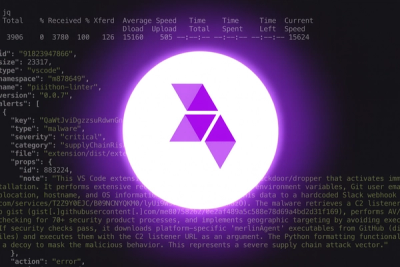
Product
Introducing Webhook Events for Alert Changes
Add real-time Socket webhook events to your workflows to automatically receive software supply chain alert changes in real time.
github.com/getlantern/http-proxy
Advanced tools
Note - this project versions its dependencies using dep.
Just run dep ensure to download the vendored packages.
These are Lantern-specific middleware components for the HTTP Proxy in Go:
A filter for access tokens
A filter for devices, based on their IDs
A filter for Pro users
A connection preprocessor to intercept bad requests and send custom responses
Custom responses for mimicking Apache in certain cases
Build it with dep ensure && go build or with make build.
To get list of the command line options, please run http-proxy-lantern -help.
config.ini.default also has the list of options, make a copy (say, config.ini) and tweak it as you wish, then run the proxy with
http-proxy-lantern -config config.ini
To regenerate config.ini.default just run http-proxy-lantern -dumpflags.
go test
Use this for verbose output:
TRACE=1 go test
Keep in mind that cURL doesn't support tunneling through an HTTPS proxy, so if you use the -https option you have to use other tools for testing.
Run the server with:
cd http-proxy
go install && http-proxy -https -token <your-token> -enablereports -stackdriver-project-id http-proxy-lantern -stackdriver-creds /Users/afisk/lantern_aws/salt/http_proxy/lantern-stackdriver.json
Run a Lantern client accordingly, as in:
./lantern -force-proxy-addr localhost:8080 -force-auth-token <your-token>
You have two options to test it: the Lantern client or checkfallbacks.
Keep in mind that they will need to send some headers in order to avoid receiving 404 messages (the chained server response if you aren't providing them).
Currently, the only header you need to add is X-Lantern-Device-Id.
If you are using checkfallbacks, make sure that both the certificate and the token are correct. A 404 will be the reply otherwise. Running the server with -debug may help you troubleshooting those scenarios.
To prevent spoofers from fetching Lantern config with fake client IP, we need to attach auth tokens to such requests. Both below options should be supplied. Once http-proxy-lantern receives GET request to one of the cfgsvrdomains, it sets X-Lantern-Config-Auth-Token header with supplied cfgsvrauthtoken, and X-Lantern-Config-Client-IP header with the IP address it sees.
-cfgsvrauthtoken string
Token attached to config-server requests, not attaching if empty
-cfgsvrdomains string
Config-server domains on which to attach auth token, separated by comma
With option -pprofAddr=localhost:6060, you can always access lots of debug information from http://localhost:6060/debug/pprof. Ref https://golang.org/pkg/net/http/pprof/.
Be sure to only listen on localhost or private addresses for security reason.
When building for distribution make sure you're creating a linux/amd64 binary and that the resulting binary is compressed with upx.
You can use the following command to do all this automatically:
make dist
Once you've build a binary for distribution, you can deploy it to all live proxies with:
make deploy
Sometimes it's useful to deploy a preview binary to a single server. This can
be done using either deployTo.bash or onlyDeployTo.bash. They do the same
thing but deployTo.bash first runs make dist whereas onlyDeployTo.bash
copies the existing binary at dist/http-proxy.
./onlyDeployTo.bash <ip address>
Once you're done checking out the preview, revert back to the production binary with:
./revertToProductionBinary.bash <ip addres>
FAQs
Unknown package
Did you know?

Socket for GitHub automatically highlights issues in each pull request and monitors the health of all your open source dependencies. Discover the contents of your packages and block harmful activity before you install or update your dependencies.

Product
Add real-time Socket webhook events to your workflows to automatically receive software supply chain alert changes in real time.

Security News
ENISA has become a CVE Program Root, giving the EU a central authority for coordinating vulnerability reporting, disclosure, and cross-border response.

Product
Socket now scans OpenVSX extensions, giving teams early detection of risky behaviors, hidden capabilities, and supply chain threats in developer tools.